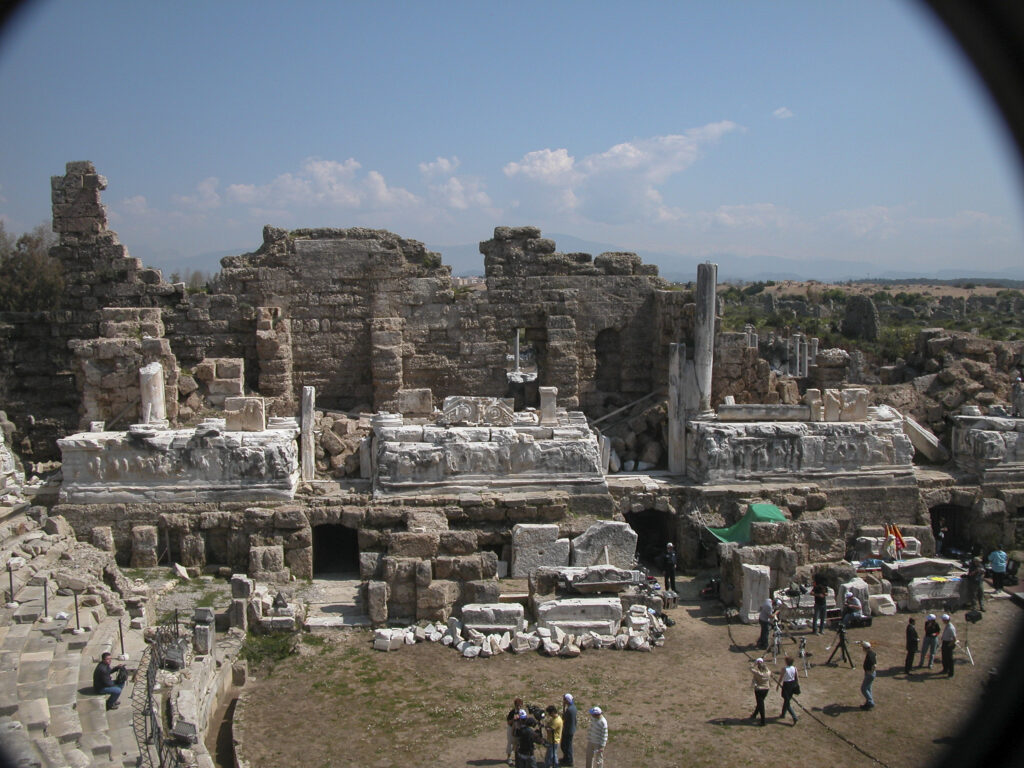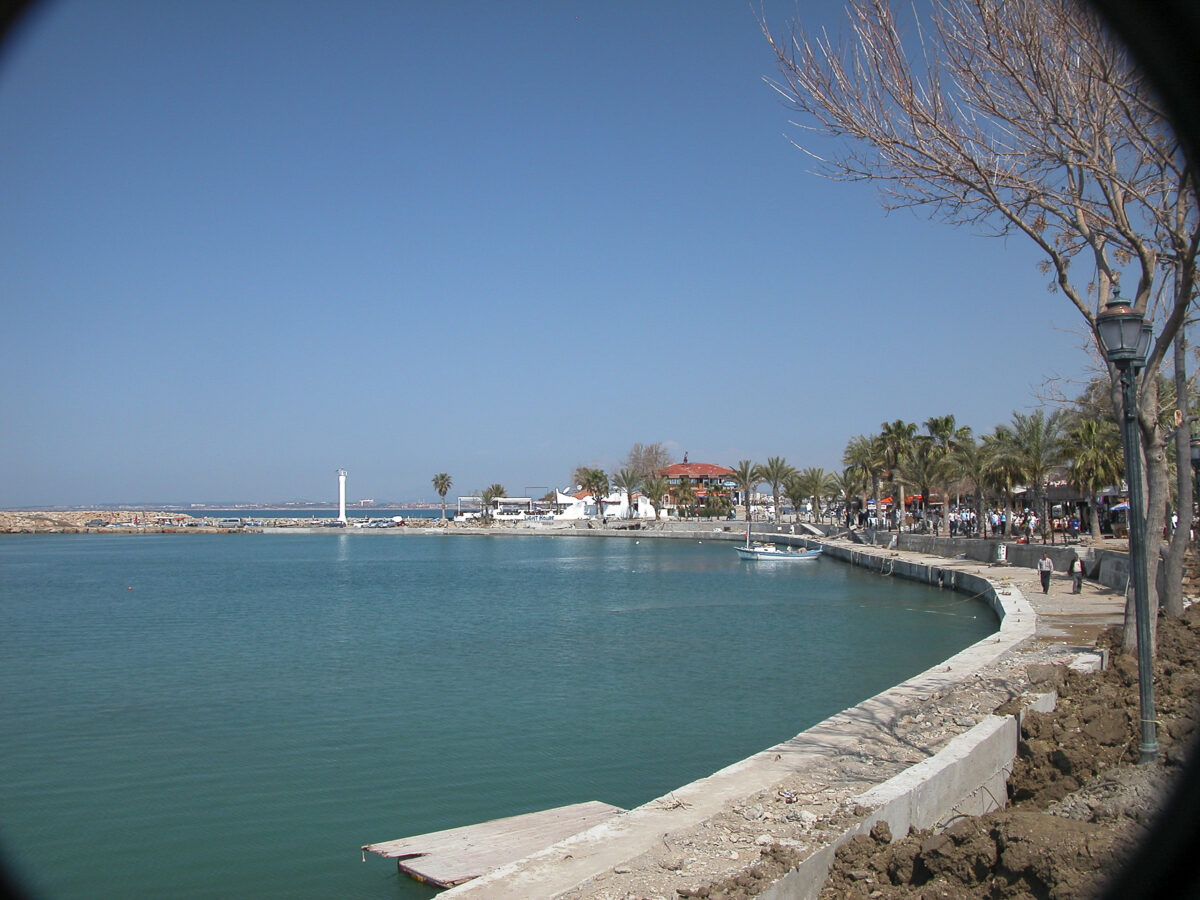Side is a small city on the Mediterranean coast of Turkey, with a population of 11,000. It is quite ancient, having been founded by Greek colonists in the 7th century BCE or maybe even earlier. Oddly, the Greek settlers adopted the tongue of the indigenous inhabitants, and several inscriptions have been found in this language, dating from the third and second centuries BCE; it was a now-extinct Indo-European language of the Luwian group, i.e. probably related to other ancient Anatolian languages such as Lydian, Carian, etc.
In the mid-first millenium BCE, Side came under the control of the Lydian kingdom and then the Achaemenid Persian Empire until Alexander the Great took it over in 333 BCE. After Alexander’s death, control of Side passed first to the Ptolemies of Egypt and then the Seleucids of Syria, until the expulsion of the Seleucids in 190 BCE, following which Side asserted a de facto independence. By the first century BCE Side had become a major pirate haven and center of the slave trade, finally attracting the unfavorable attention of Rome. In 67 BCE Pompey the Great undertook a campaign that swept the pirates from the sea and brought Side under Roman rule; but it continued to be the great emporium of the Mediterranean slave trade, as well as a major commercial port exporting olive oil, into the third century CE. After that it went into decline, eclipsed by Antalya to the west.
Side has one of the most irritating names of any town I have ever visited. It is the source of much confusion, not least because it is spelled like a common English word, with which it has nothing in common. It is pronounced something like See-day, but this only deepens the confusion, because that is easily mistaken for the English word “city.” I have been told that the word means “pomegranate” in Greek.
Aside from all that, though, Side was a great place to be for the total solar eclipse of 2006. It is a resort town, with a small but very nice harbor, beautiful beaches, and a number of posh hotels. It also has some wonderful Greco-Roman ruins.
We arrived at Side late in the evening of March 27, and, exhausted by the long and eventful trip from Denizli, went right to bed. I’ll leave a description of our hotel, the Kaya Side, which was our base for viewing the eclipse, for the eclipse day post. On the morning of the 28th, we arose early and after a quick breakfast sped off to the central area of Side, where both its ancient ruins and modern shopping area were located.
The eclipse was a big deal in Side. Upon our arrival in the central square, where our bus let us off, we were greeted by a large purple banner with words in Turkish that said I have no idea what, but clearly had something to do with the eclipse.
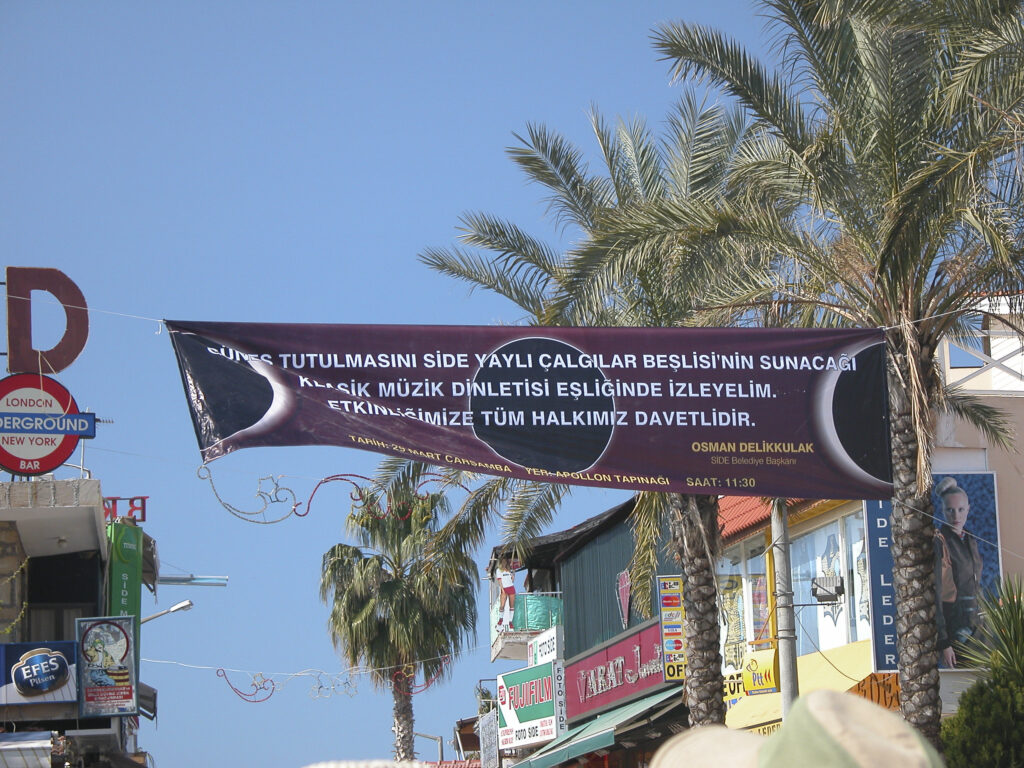
Despite all the excitement generated by the hordes of crazed barbarians come for the eclipse, Side appeared to be a laid-back town with an easygoing, good-natured ambience.
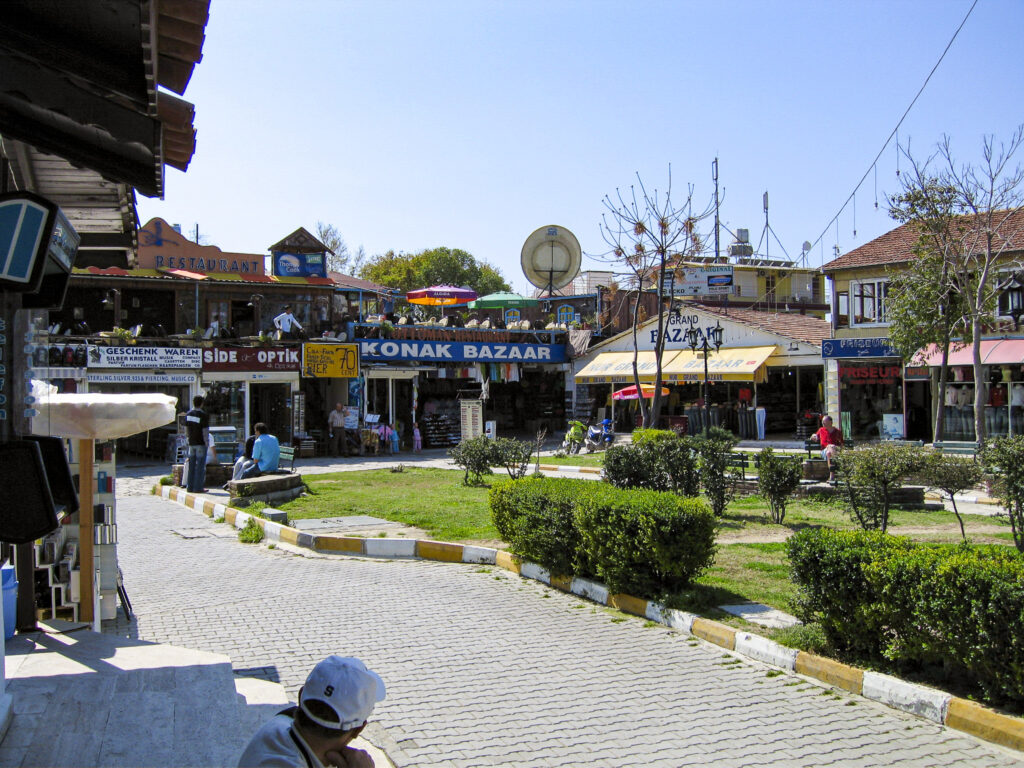
We immediately made for the harbor, which was located some distance away at the end of a street lined with shops and restaurants catering to the tourist trade.
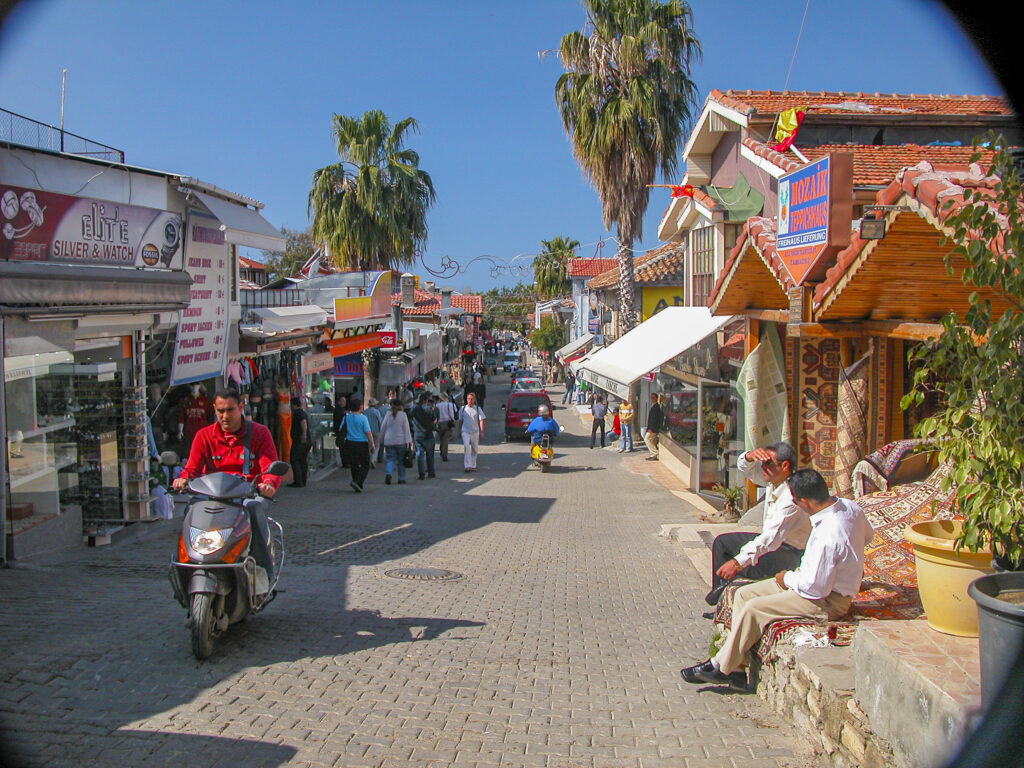
Tattoo parlors were well represented in the tourist district. By 2006 the fashion for adorning one’s body with bizarre designs had caught on in Turkey just as everywhere else.
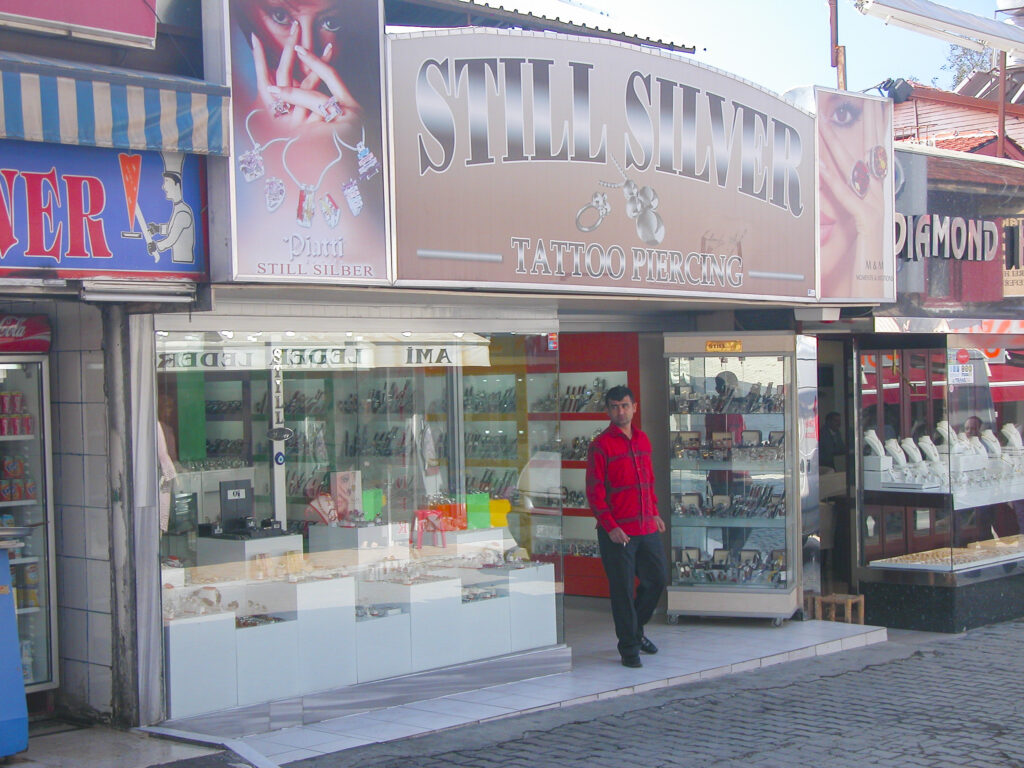
I had been under the impression that Side catered mostly to northern European, especially German, vacationers seeking sunny beaches, but was surprised to note that Americans were expected also. One establishment, the Uncle Sam Restaurant, was apparently set up to cater expressly to visitors from the U.S.A.
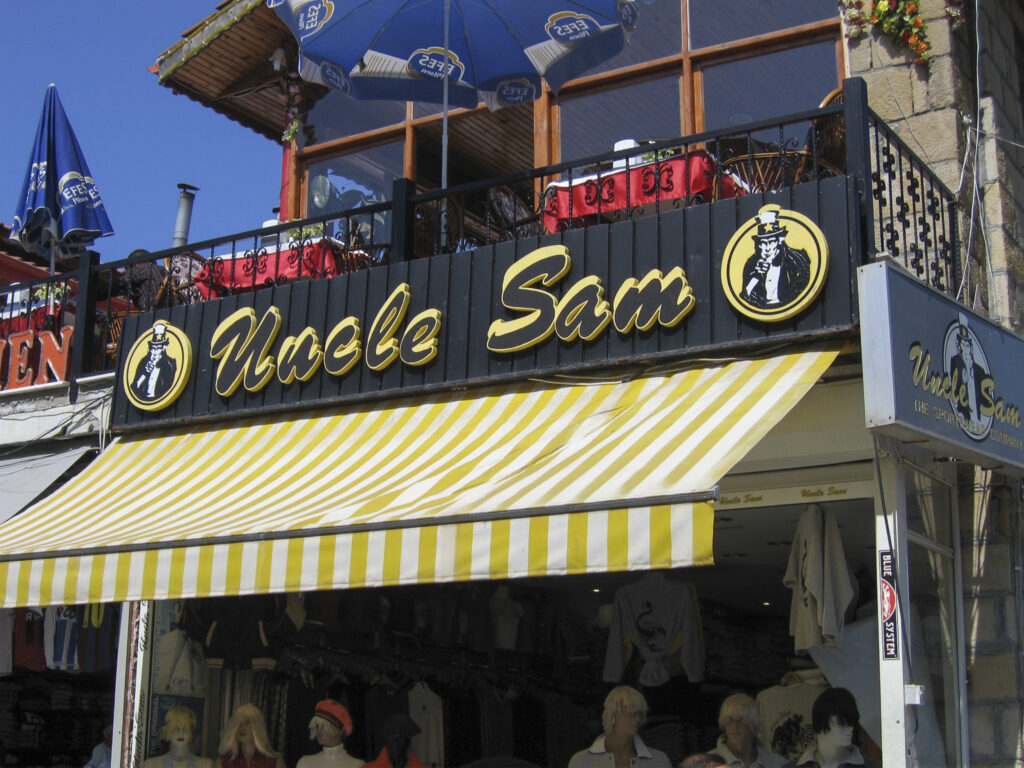
I was astounded to find this relic of the Southern California car culture, in which I was immersed while growing up, in a shop in a Turkish provincial town. No more convincing evidence of globalization can be imagined.
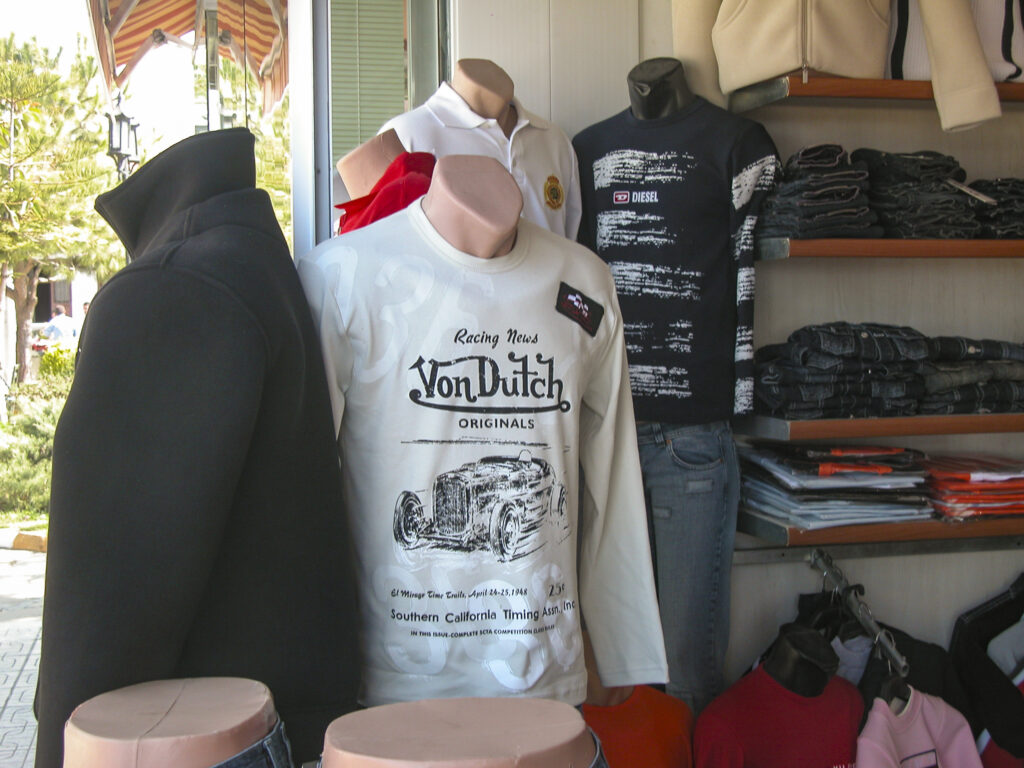
Upon arriving at the harbor we encountered the obligatory memorial to Kemal Ataturk. There is now also a full-length statue of him in the central square, although I don’t remember seeing it when we were there.
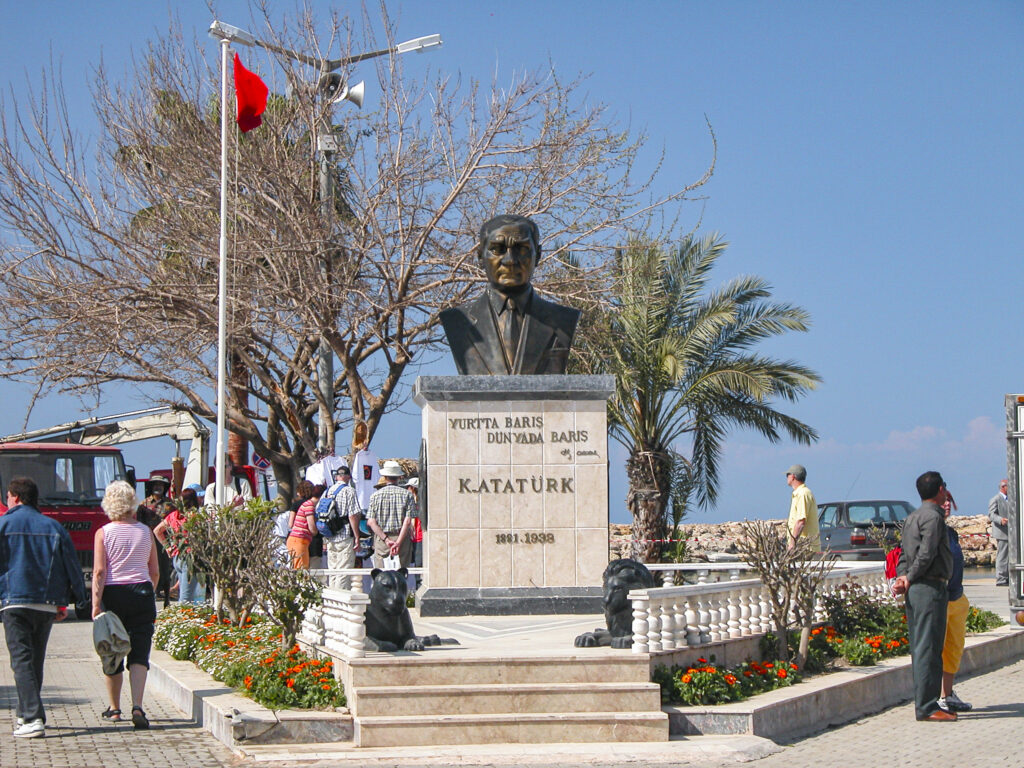
There were several temples in the ancient city. The patron deities of Side were Athena and Apollo, and their almost identical twin temples commanded the harbor entrance. A news crew was filming the tourists infesting the Temple of Apollo as part of its coverage of preparations for the eclipse.
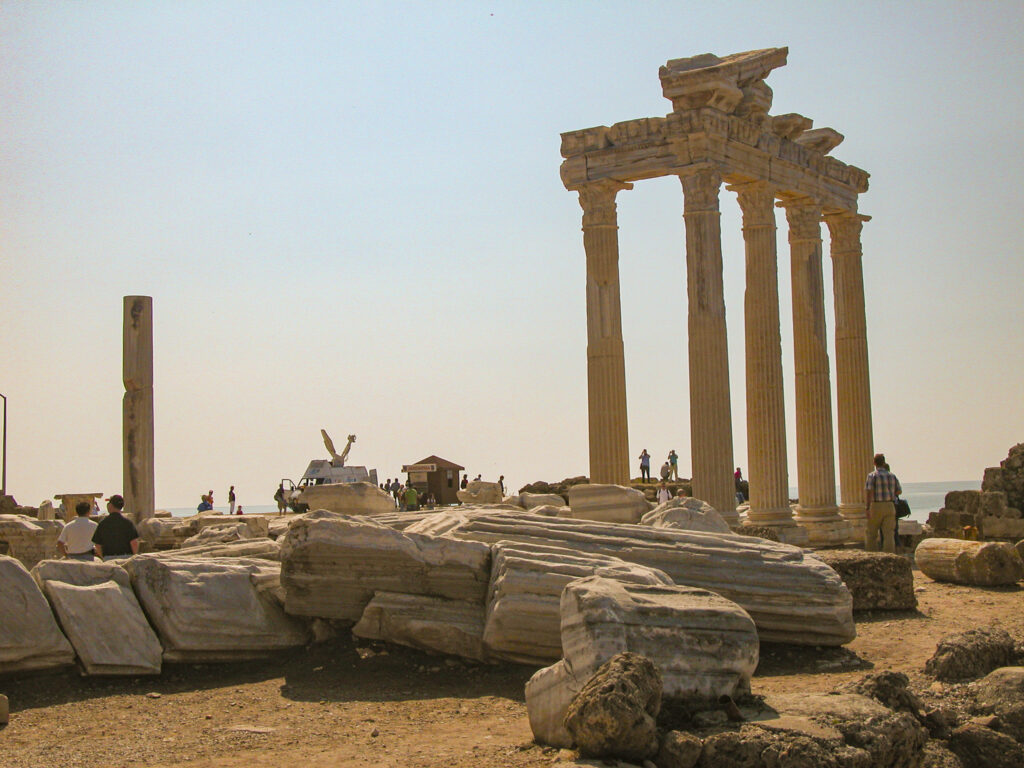
It was appropriate that Elouise Mattox, a person of considerable intellect herself, would choose to check out the Temple of Athena, the goddess of wisdom.
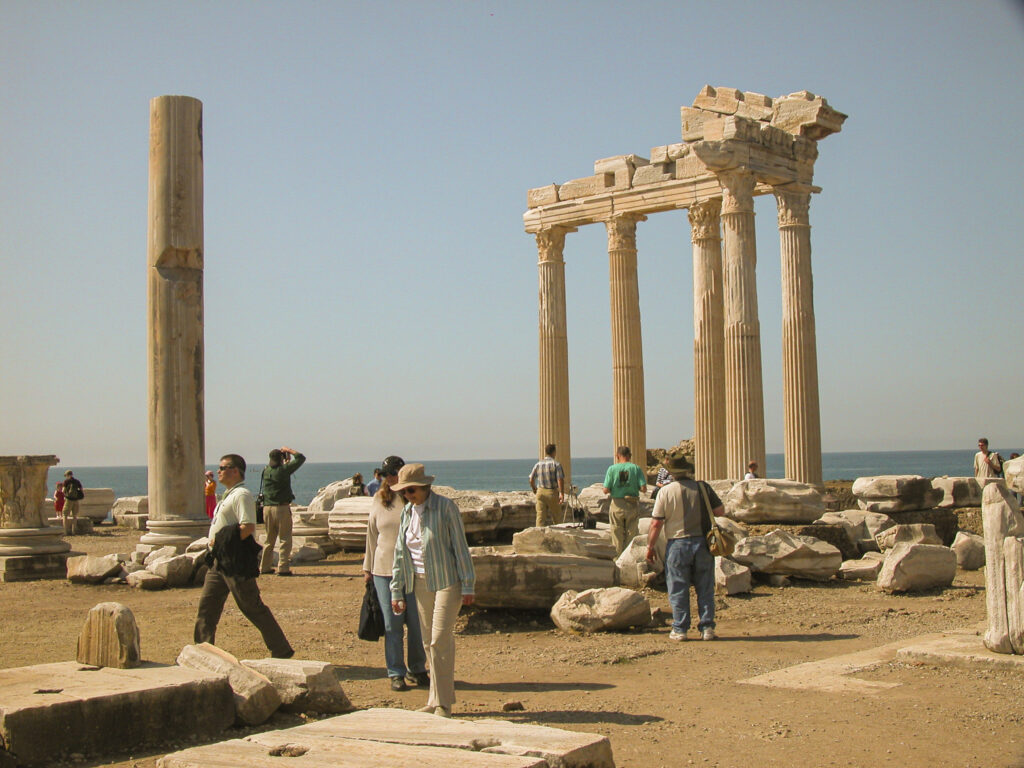
The Temple of Apollo was built around 150 CE, during the reign of Roman Emperor Antonius Pius. The capitals of the columns mark its style as Corinthian.
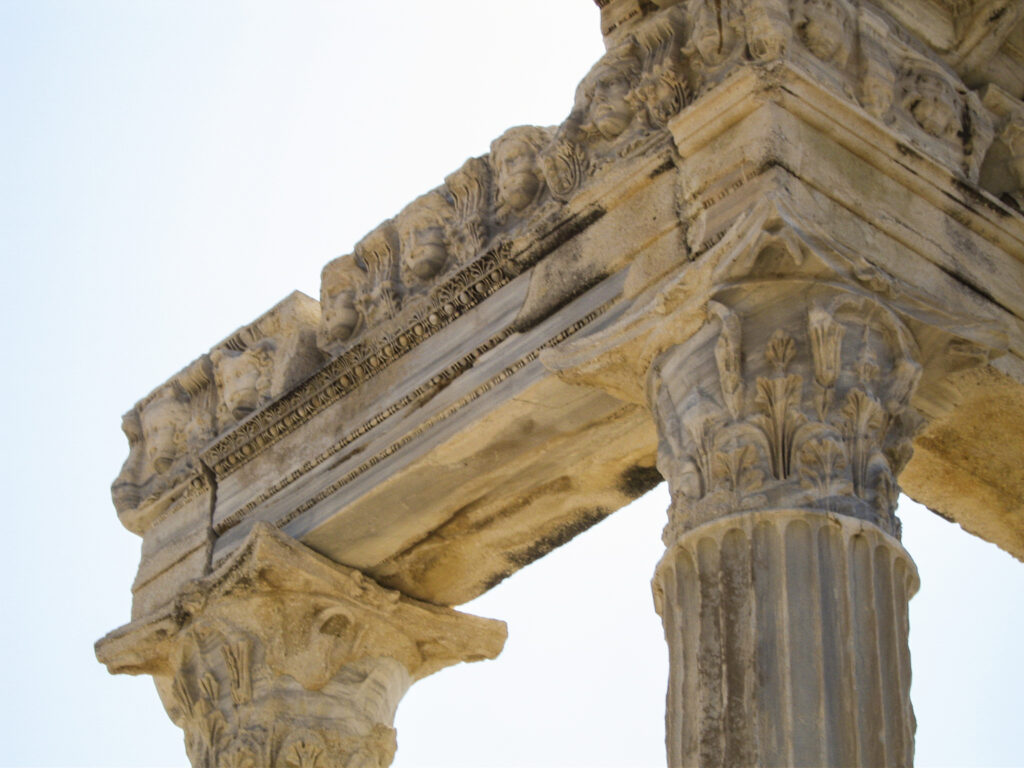
Sandie shot this picture showing the detail of the one remaining corner of the Apollo temple, with its complex partially restored cornice, on which the decorative Medusa heads can be seen. I don’t know why the Greeks were so obsessed with using Medusa heads for decoration. Did they want to turn everyone to stone?
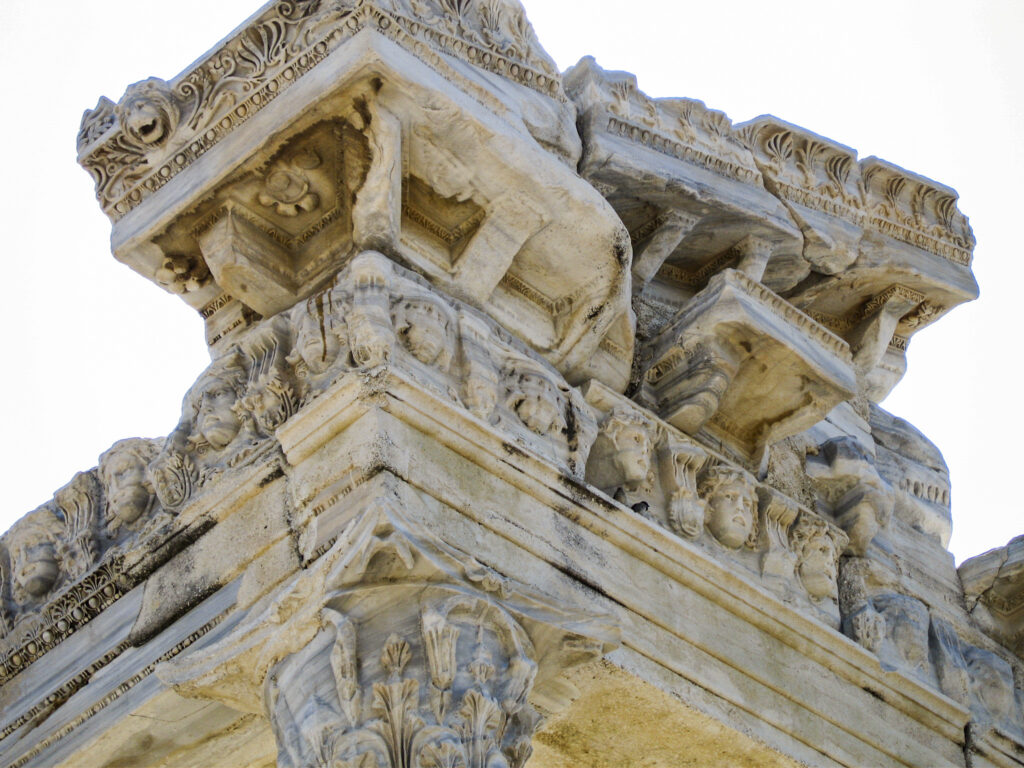
It is believed that the Temple of Apollo at Side was the place where Mark Antony first met up with Cleopatra, and he may have even given her the Temple of Apollo as a present.
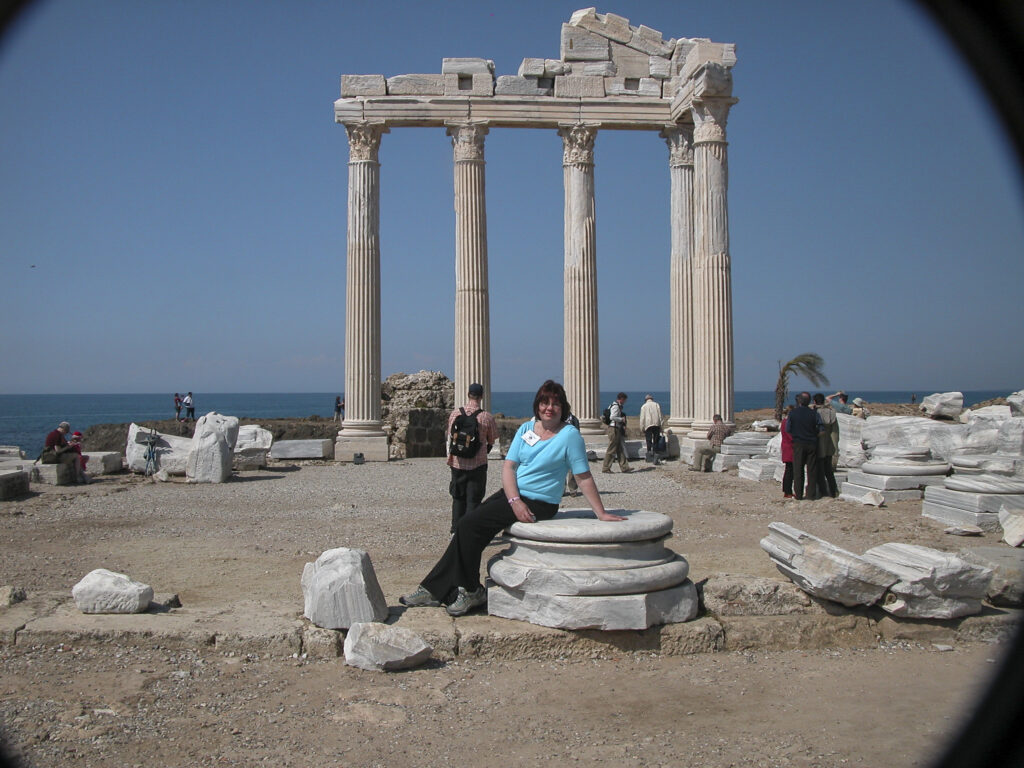
But instead of Mark Antony, Sandie got stuck with this scruffy refugee from a pirate galley, who saved her in the nick of time from being spirited away by his fellow-pirates and sold into a pasha’s harem.
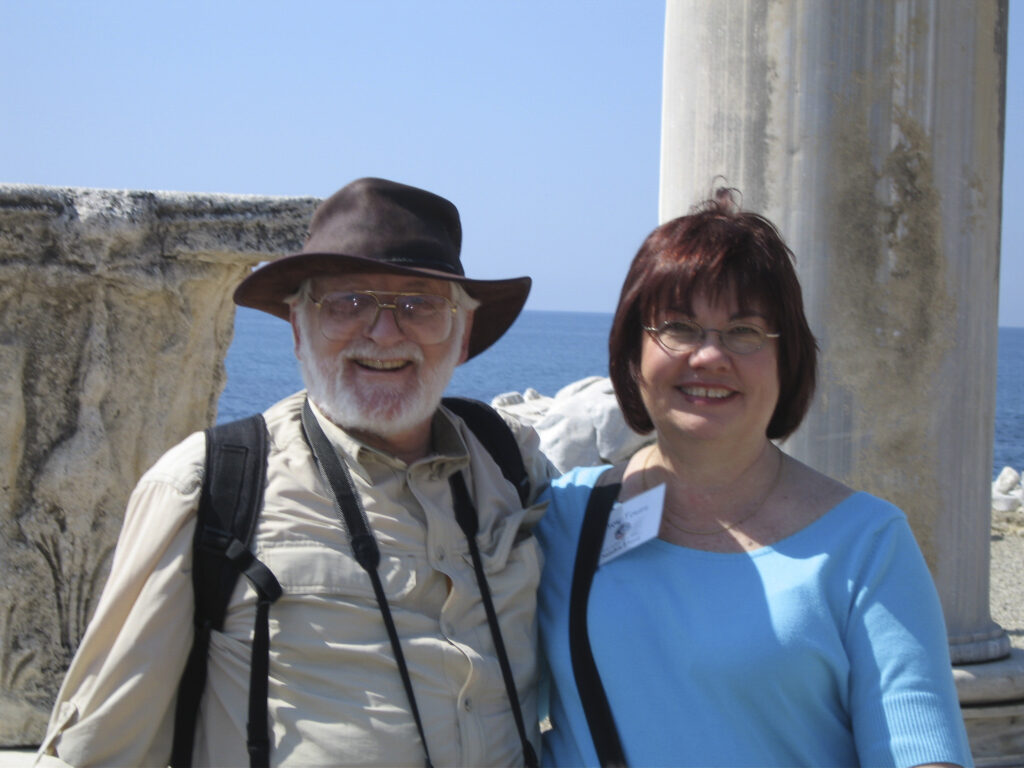
The modern-day descendants of the pirates of Side now operate excursion boats. The trend was begun by Sinbad the Sailor, who (as is recounted in the Arabian Nights) after his seventh and last voyage, took up residence at Side and started a business taking tourists on excursions along the shores of the Mediterranean.
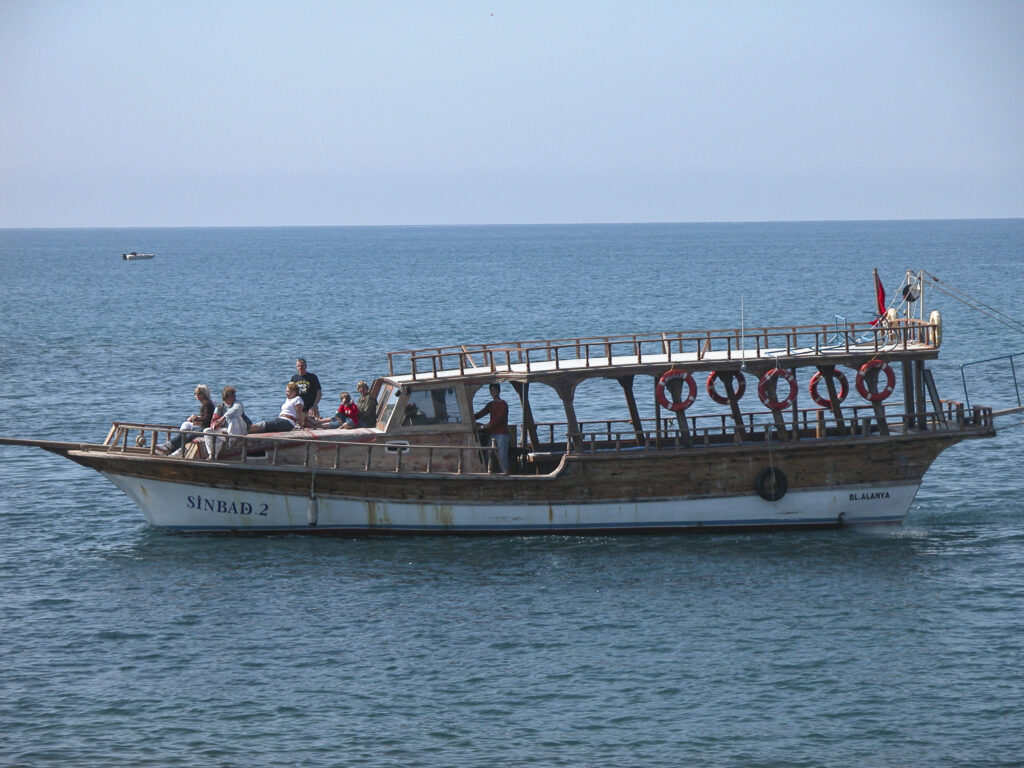
In the 5th century CE, the Christians took over in Side and built a basilica there, shown below.
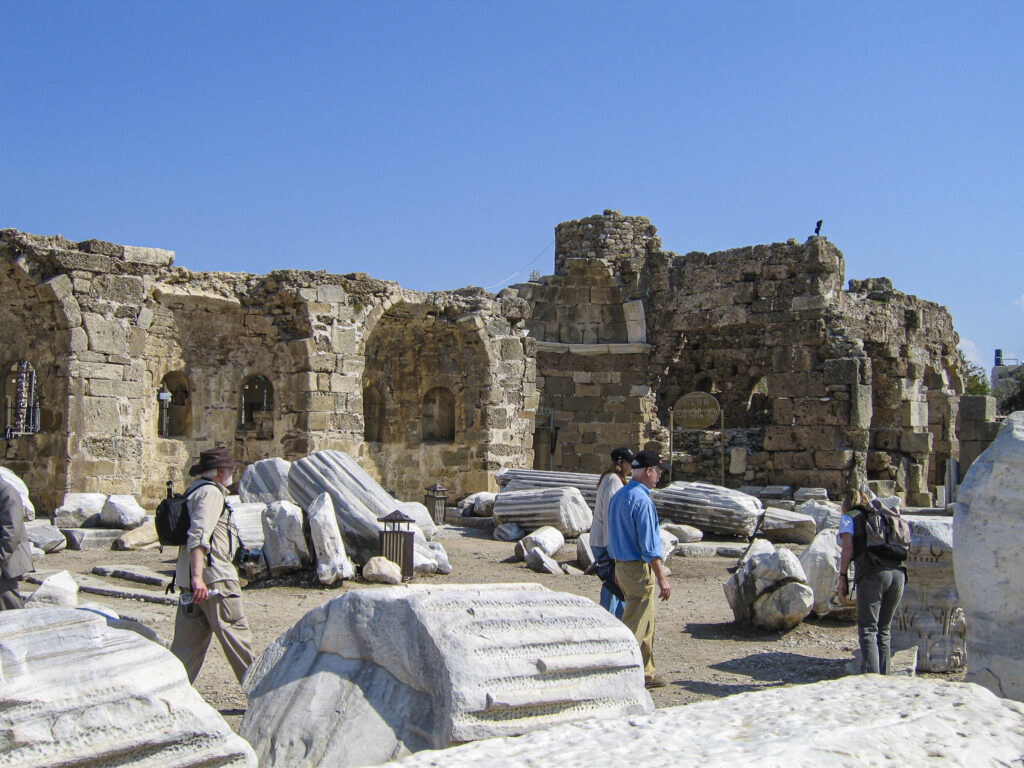
I tracked a present-day adventurer, Chuck Mattox, as he explored the ruins of Side.
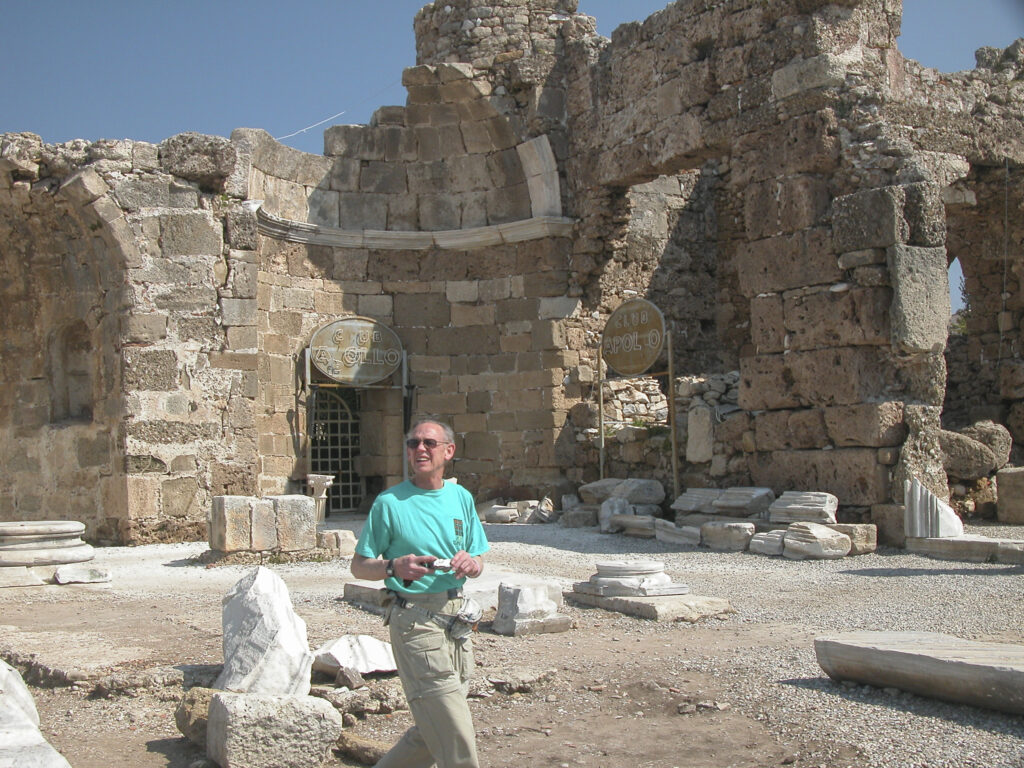
Among other places, Chuck discovered the Club Apollo, the dive where Mark Antony and Cleopatra used to hang out when they came to town.
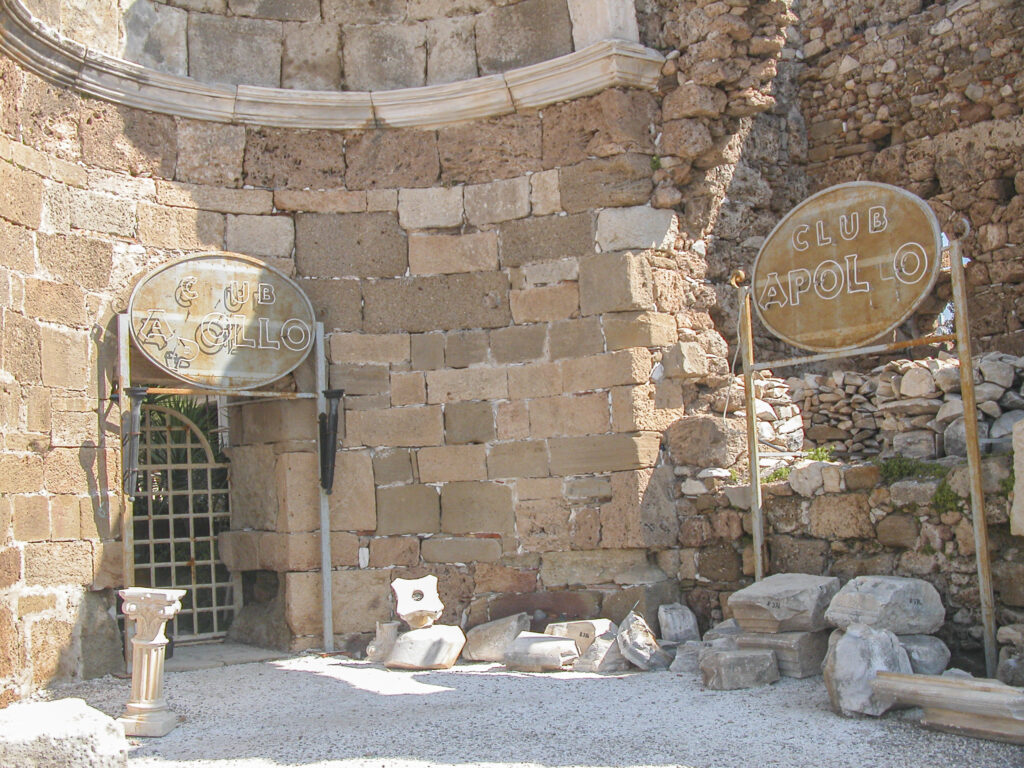
Leave it to Chuck to ferret out the night spots. He next turned up another ancient watering hole, the Marina Bar, where even now you can wine and dine amidst the ruins.
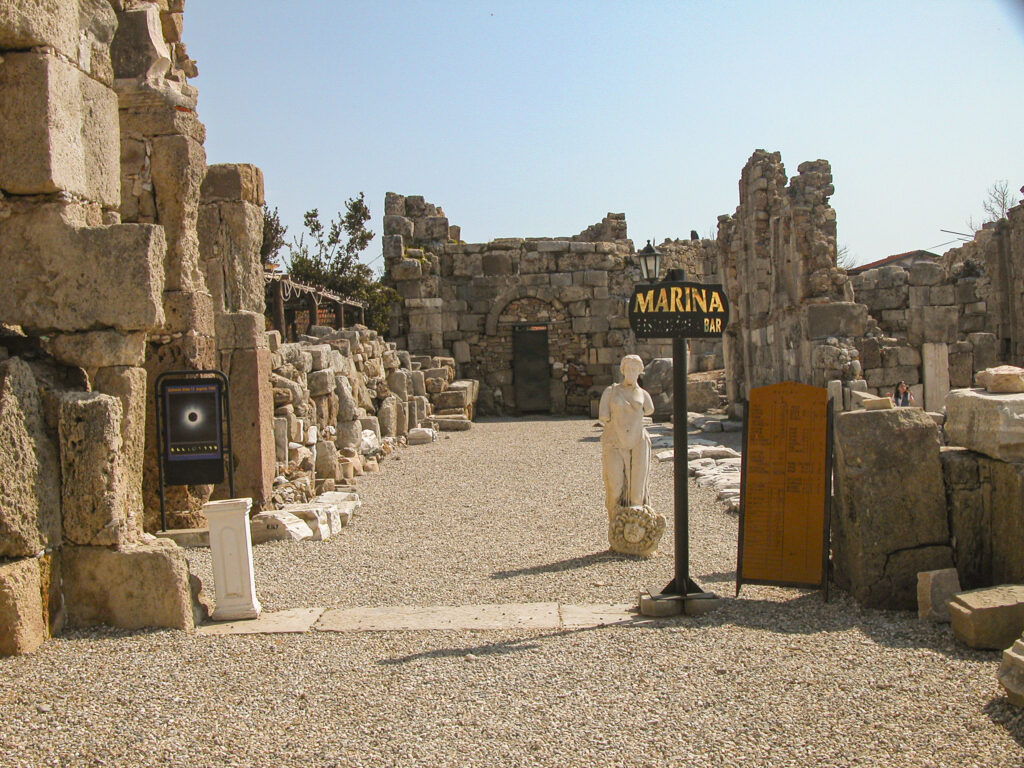
We didn’t get a chance to carouse and roister in the local dives because we had to move on to the next attraction, which was the Side amphitheater. It was already a beehive of activity, as the TV crews and other folks were setting up to cover the eclipse the following day.
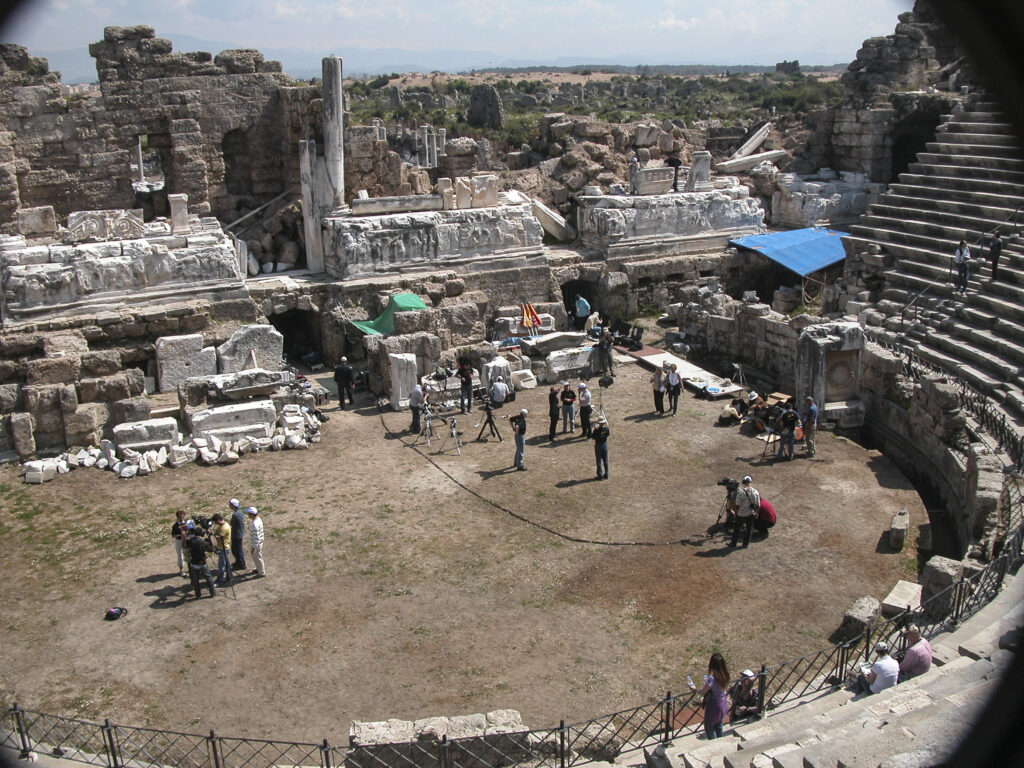
The Side Amphitheater was not as large or well-preserved as the Aspendos theater, which we were to visit next, but it was much better placed to view the eclipse, since it was inside the zone of totality and the Aspendos theater was not.
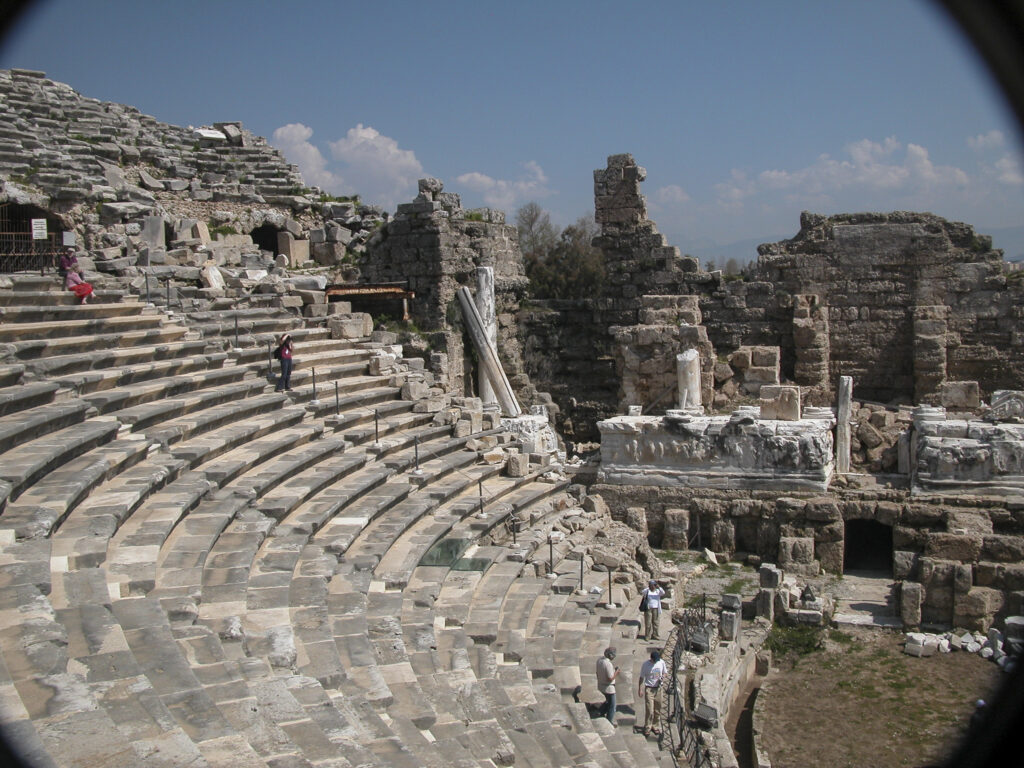
The Side Amphitheater was ground zero for viewing the spectacle on eclipse day. I shudder to think of how packed the place must have been, and I think our location on the beach at the Kaya Side Hotel must have been much less crowded and more relaxed.
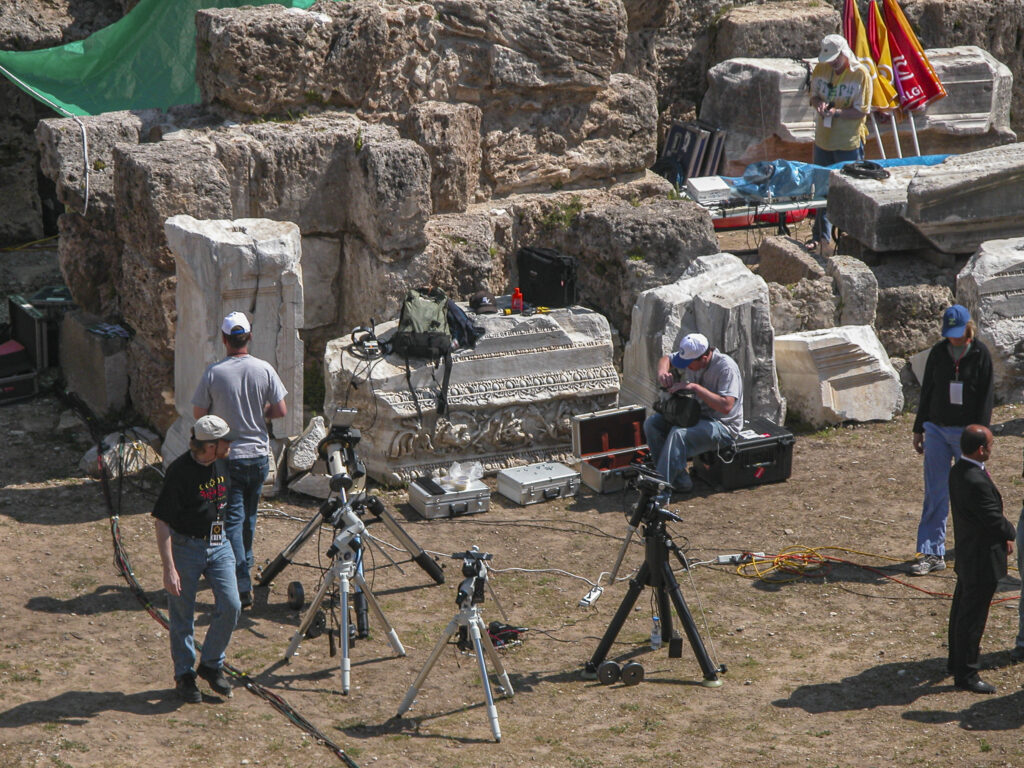
The Side theater was built in the Roman style, which, like the Colosseum in Rome, relies on arched pillars to support the seating area, because there was no hillside to build into as with the theaters in Ephesus and Aphrodisias. But it was a magnificent theater, seating 15-20,000 people.
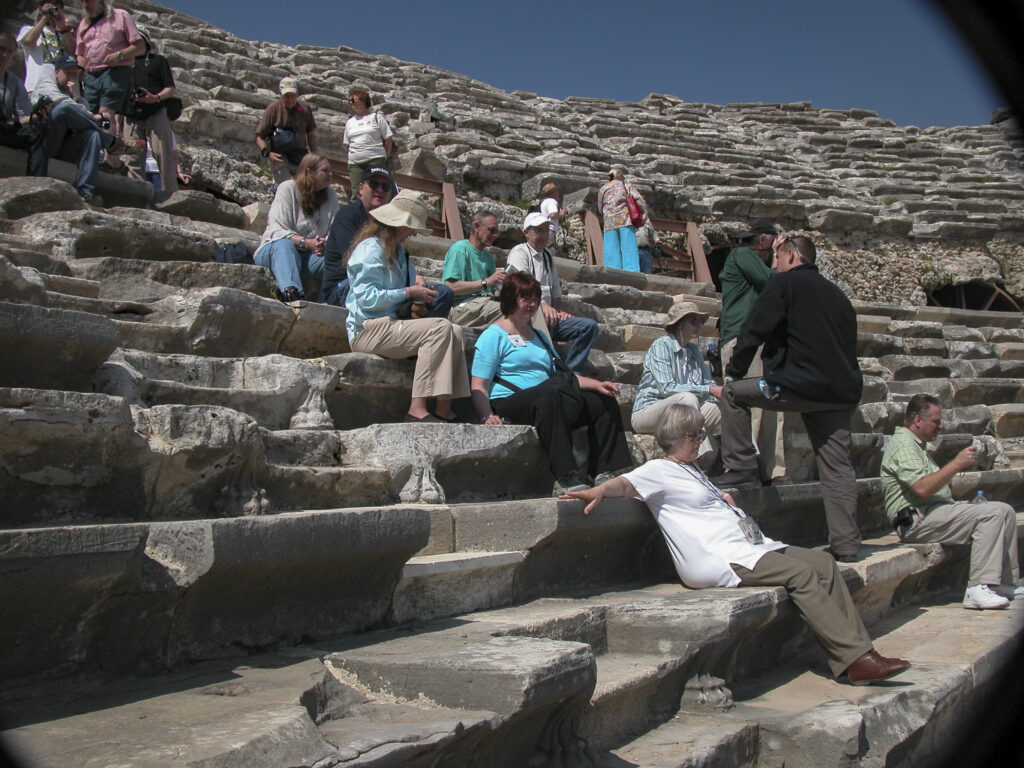
Anatolia, the heartland of the Byzantine and Ottoman Empires and of modern Turkey, is an unstable area geologically, much prone to earthquakes, as the tour groups who came for the 1999 solar eclipse found to their dismay. The 1999 eclipse took place on August 11; on August 17 a magnitude 7.6 earthquake struck at Izmit (NOT to be confused with Izmir), a city of 367,000 on the Gulf of Izmit, an arm of the Sea of Marmora about 100 kilometers or 67 miles east of Istanbul. The earthquake caused extensive damage throughout the area, including in Istanbul. Many of the eclipse viewers were still touring Turkey at the time and were stuck in the country, unable to leave, during the chaos following the tremor, since many commercial flights were canceled owing to the diversion of planes, airports and other transport in support of the international emergency aid effort.
Side, of course, although not much affected by the quake of 1999, has had its share of tremors over the centuries, and they took their toll on the ancient structures, such as the theater and its once-magnificent proscenium (stage), the ruins of which are still quite impressive.
